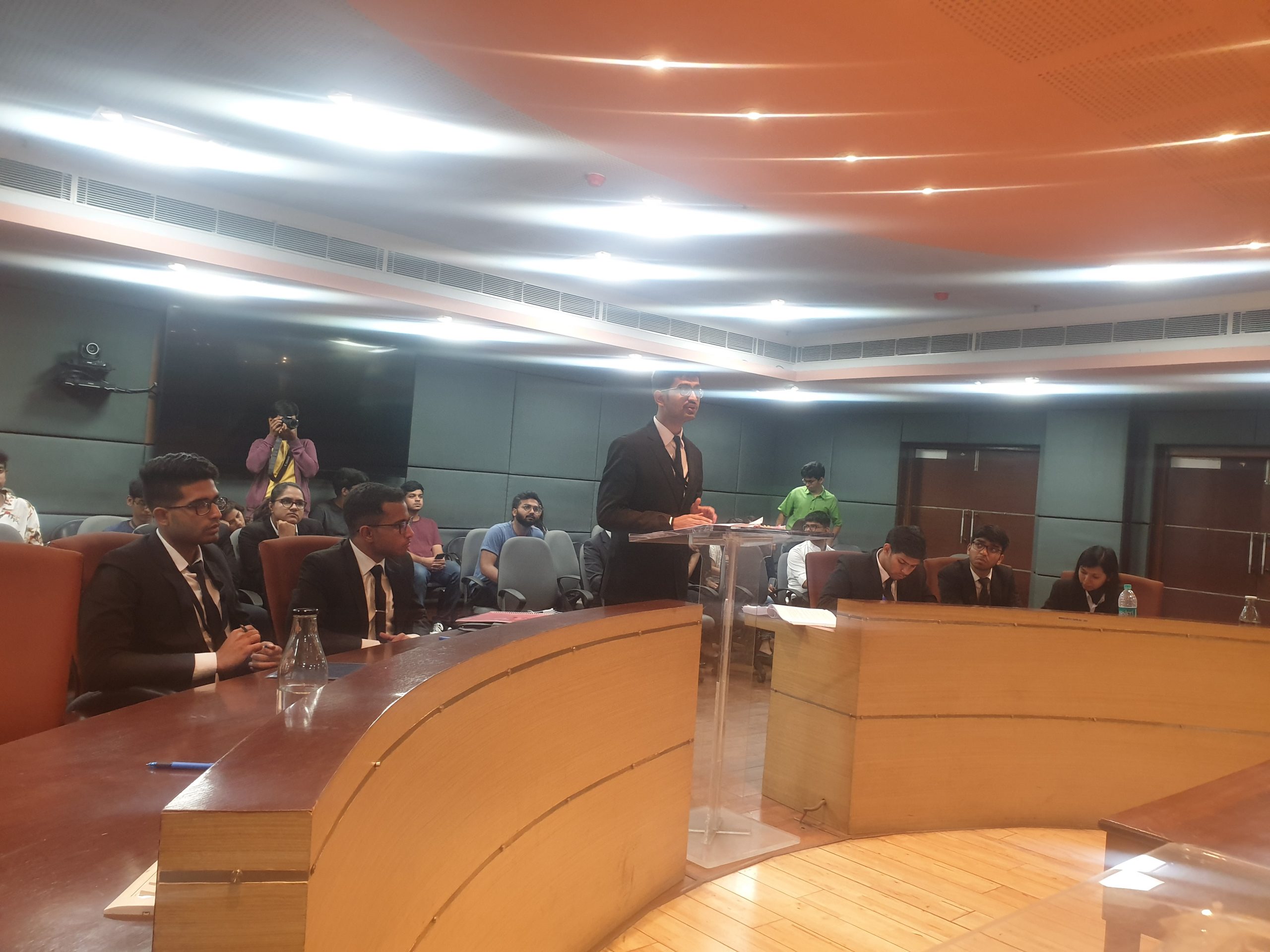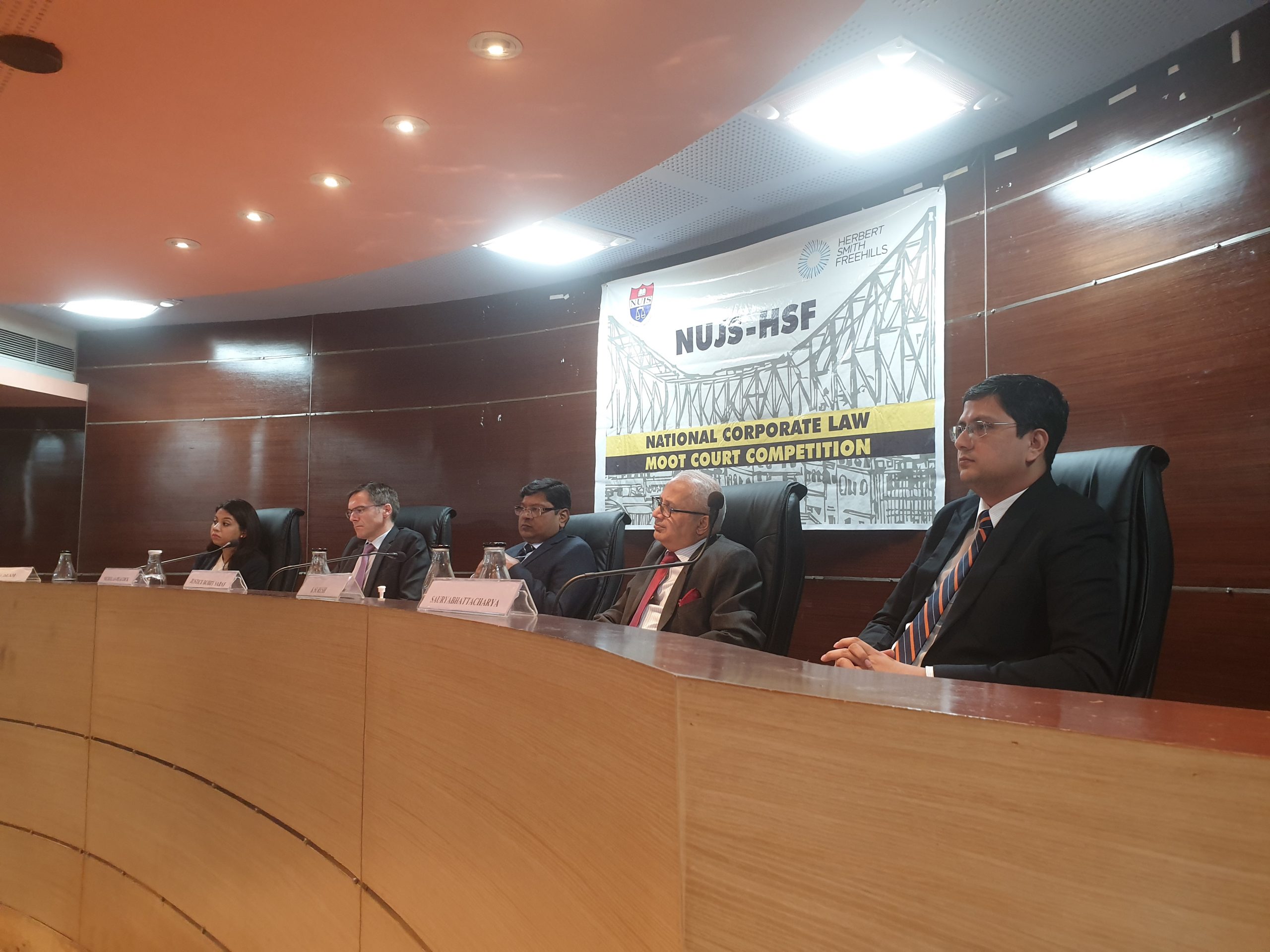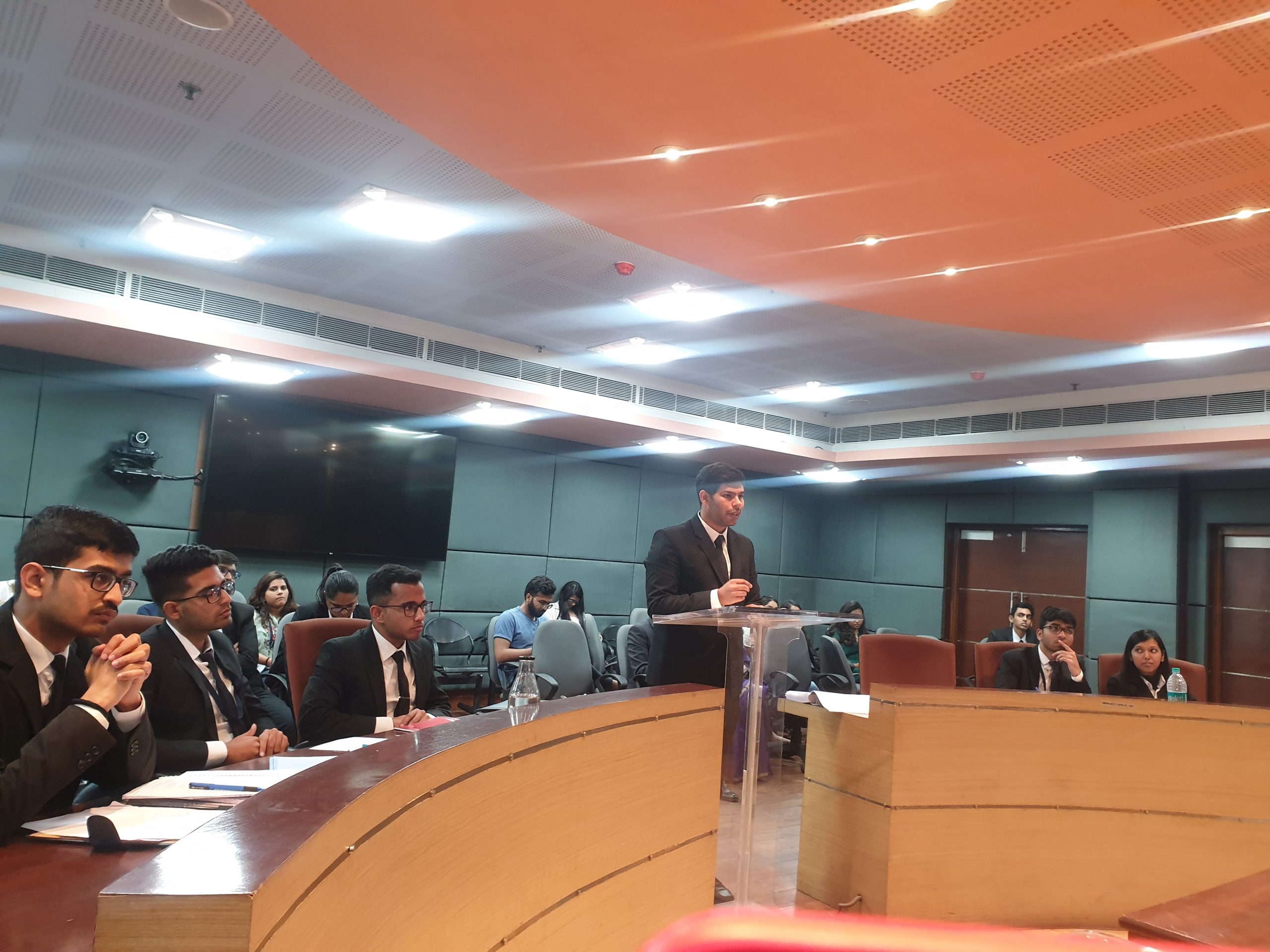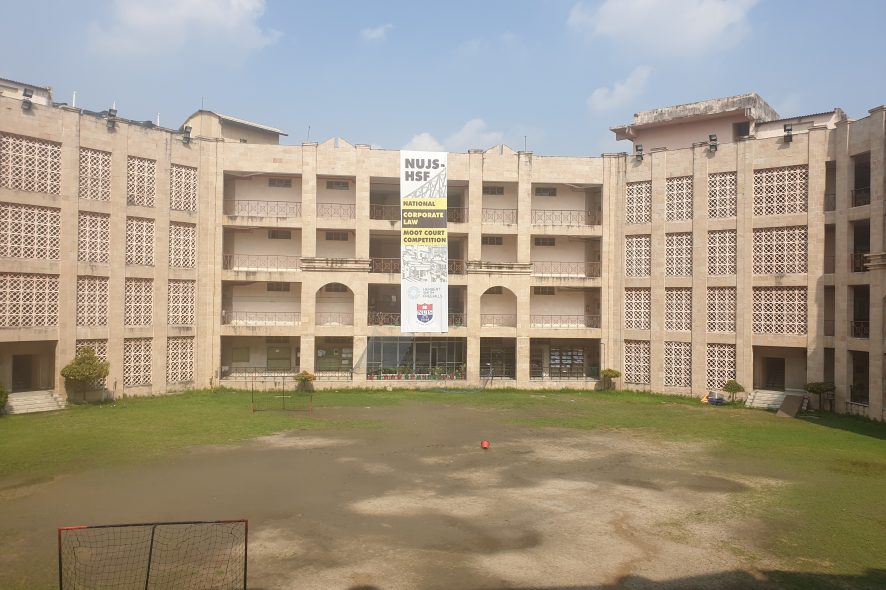The National University of Juridical Sciences in association with the international law firm Herbert Smith Freehills is hosting the NUJS-HSF National Moot Court Competition 2020 from the 6th of March to the 8th of March, 2020. The case problem this year was drafted by distinguished professor Mr. Umakanth Varottil.
We will be going live during the finals of the competition
The teams that have qualified to the finals are T9 (the appellants) and T13 (the respondents). We wish the teams the very best!
The judges for the rounds are Ms. Saurya Bhattacharya, Mr. K Suresh, Justice Bobby Saraf, Mr. Nicholas Peacock, Ms. Suhana Islam.
14.57: First speaker from the appellant’s side has started addressing the court
15.01: Justice Bobby Saraf interjects and asks the first question. The speaker responds
15.03: Mr. Saurya Bhattacharya asks the next question on material adverse change. The speaker talks about the seminal facts of the problem. Mr. Saurya cross questions the speaker.
15.04: Mr. Suresh asks probing questions to the speaker.
15.09: Speaker answers Mr. Nicholas Peacock’s question.
15.11: Ms. Suhana Islam questions the speaker on the point that the press release has been persuasive and trying to change the mind of the shareholders.
15:14 Mr. Suresh questions the speaker continuously.
15:17: Mr. Suresh asks the speaker to justify the cause.
15.19: The speaker concludes his arguments.
15.21: The second speaker has started his arguments.
15.24: Mr.peacock asks the speaker about the primary purpose and Mr. Suresh continues the questions.
15. 28: judge asks a pertinent question about unpublished price sensitive information.
15.35: judge asks what makes it a favourable clause? speaker responds by talking about hostile takeovers
15.37: Mr. Suresh questions. The counsel cites Mr. Umakanth Varottil’s work on hostile takeovers in his response.
15:28: judge asks a pertinent about unpublished price sensitive information.
15:37: Mr. Suresh asks the speaker is he will to go ahead with his initial offer. Asks the speaker his locus in undermining the market.
15:51: the first speaker from the respondant’s side has come to the podium.
15:52: Mr. Peacock asks a fundamental question, he asks why do they care about the breach.
15:54: the speaker is asked to answer in brief.
15.55: Mr. Suresh asks a probing question which the speaker answers confidently. But seems like the judges aren’t done asking her questions, as they ask her question after question.
16.00: The judge asks about the information that had been disclosed.The answer seems to have satisfied the judges as they all nod in agreement.
16.02: Mr. Suresh asks the speaker to read out clauses b and c
16.04: the judges also inquire about the d clause and asks her to explain
16.06: justice saraf asks a question which the speaker answers with grace
16.08: the judge asks the speaker a question about the intent.
16.09: the speaker asks for extension of time
16.12: the second speaker starts speaking.
16.13: Mr. Suresh asks a question as soon as the speaker started speaking and Mr. Peacock asks the speaker to be more specific.
16.16: Justice Saraf asks about the merger
16.18: The judge asks can the management orchestrate a competing offer when there’s already an offer.
16.26: the judge questions SEBI’s jurisdiction over this matter.
16.28: judge asks the speaker whether there’s a clause that mentions what punishment or penalty SEBI can impose
16:32 Judge asks “is that for every listed transaction the law firm deals with, they are dealing in security?” and asks him to move on to his next issue.

16.42: The rebuttals have begun.
16.48: The appellants side is finally done with their rebuttals and the reply to their rebuttals has started.
16.50: Finals have come to an end after a great performance by both the teams.











results please